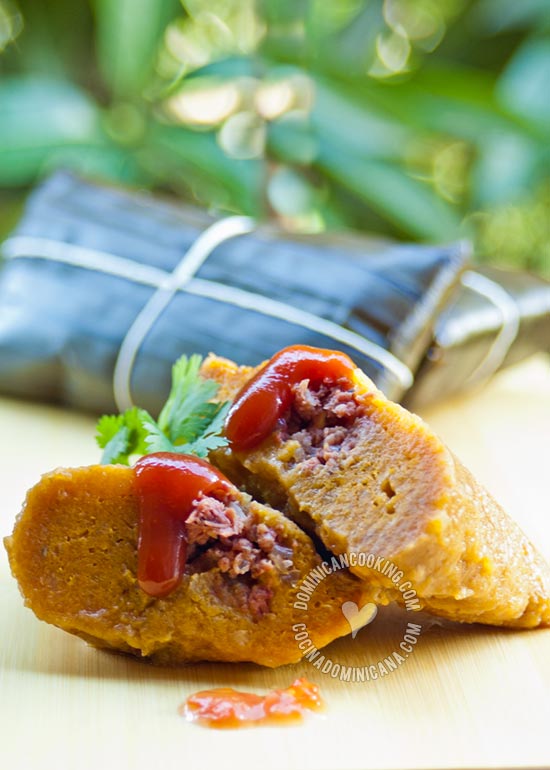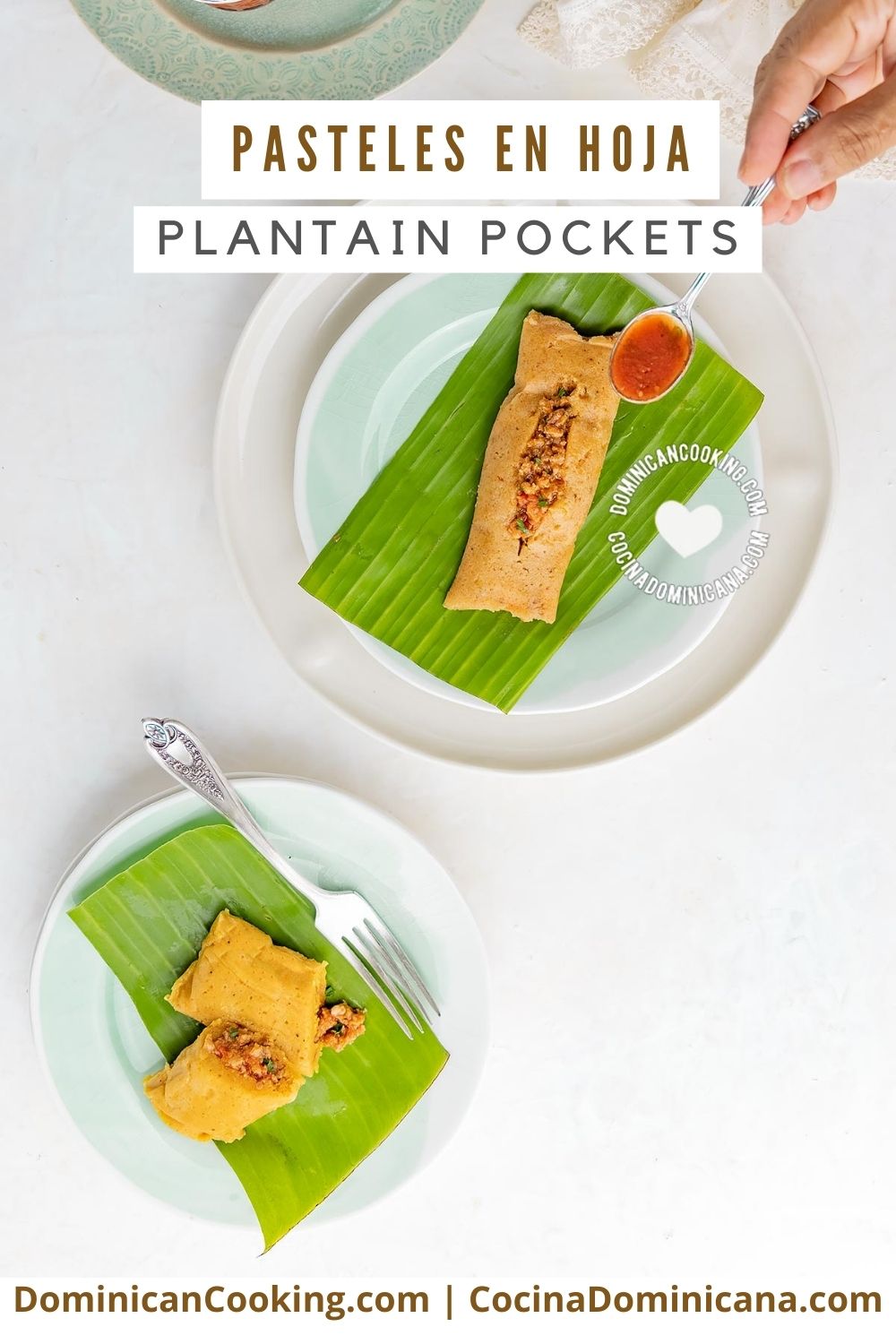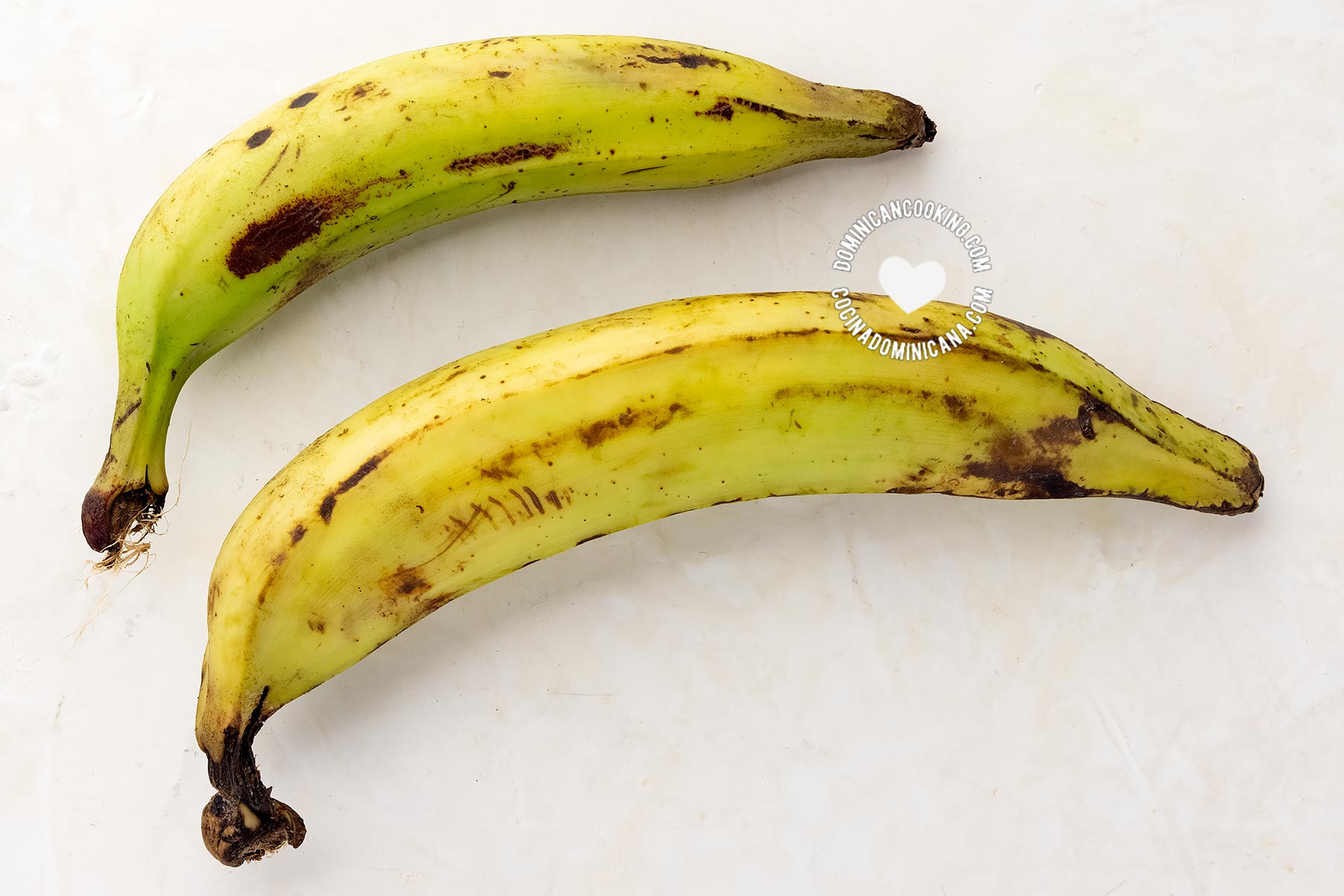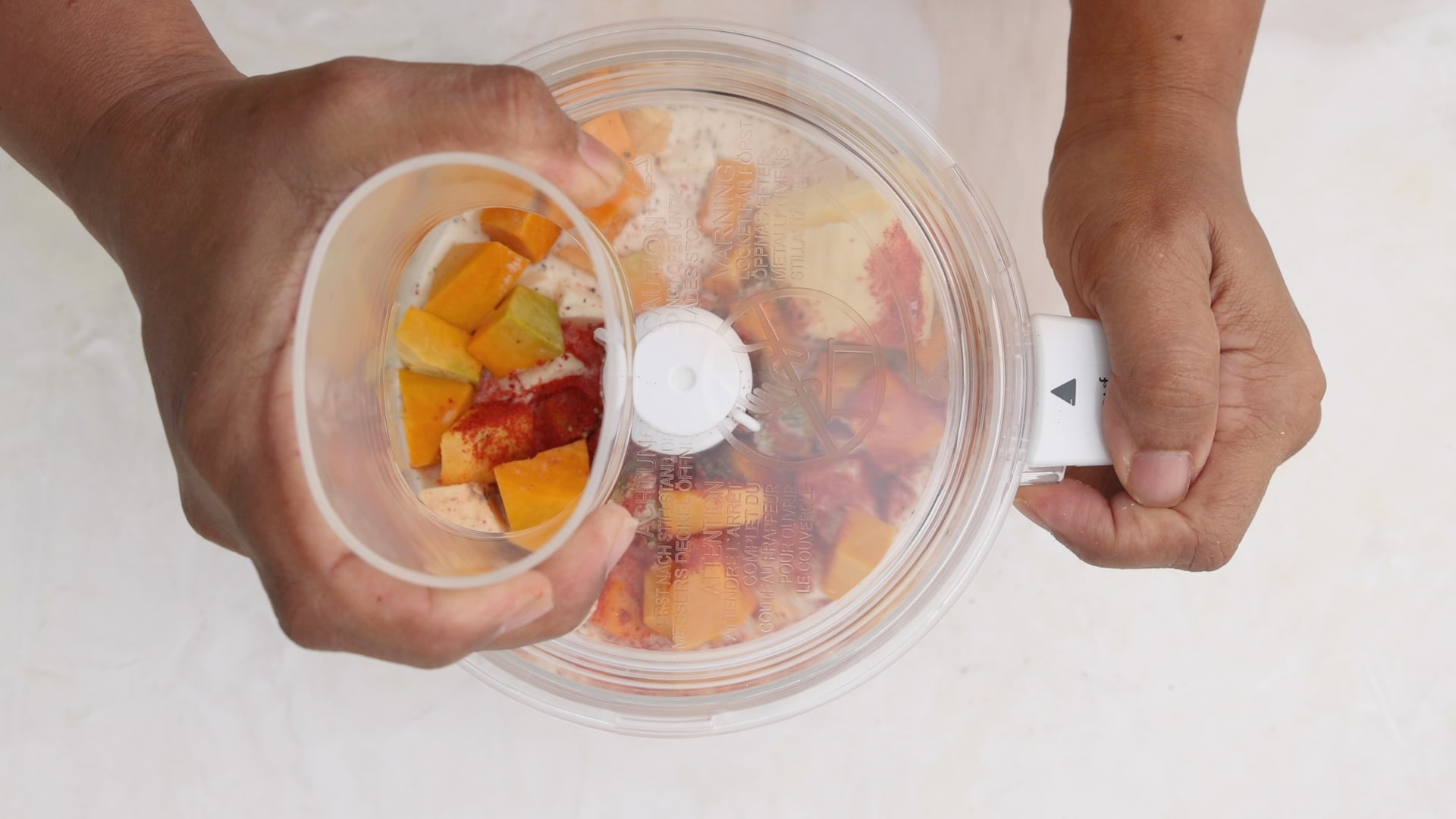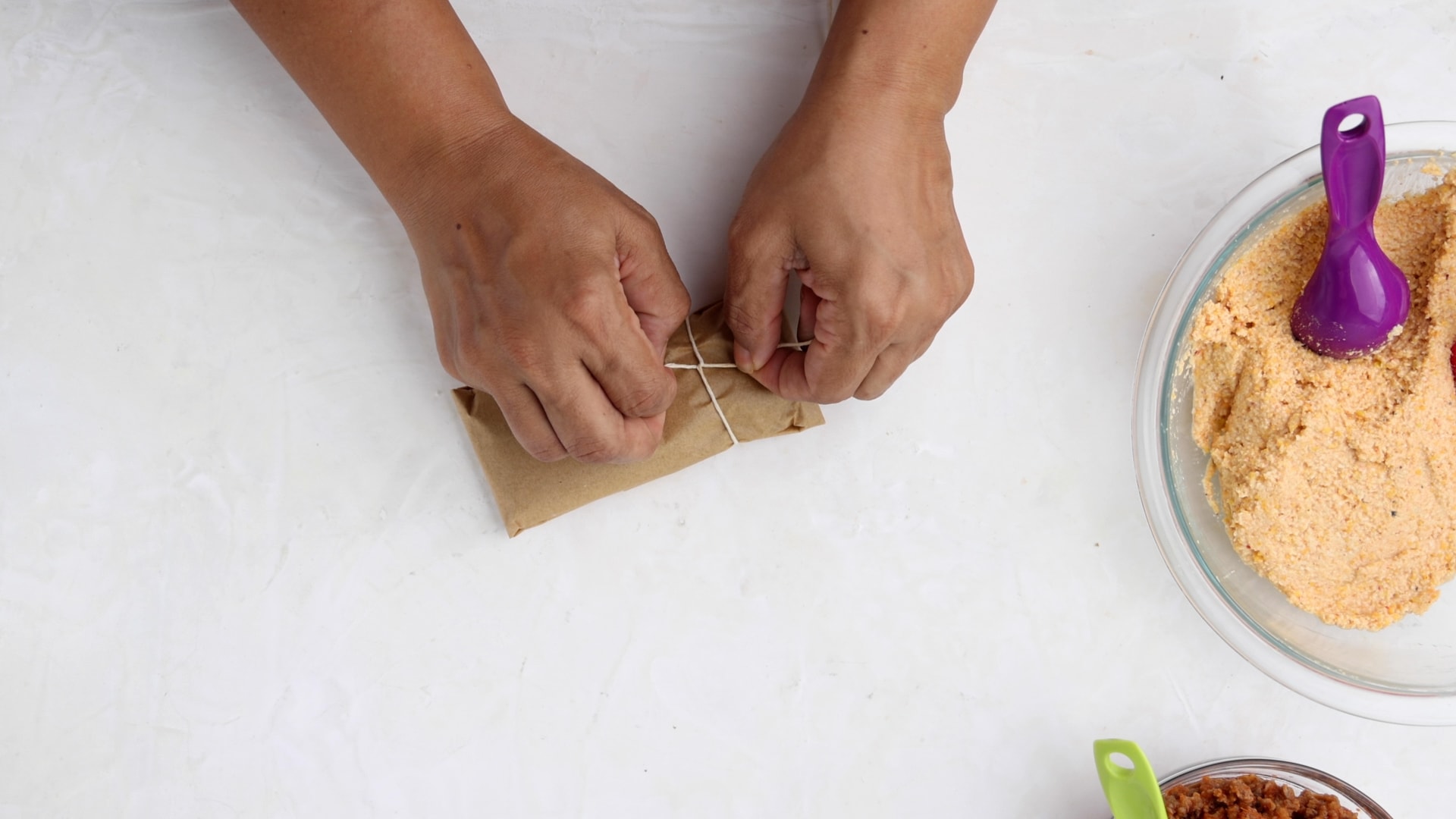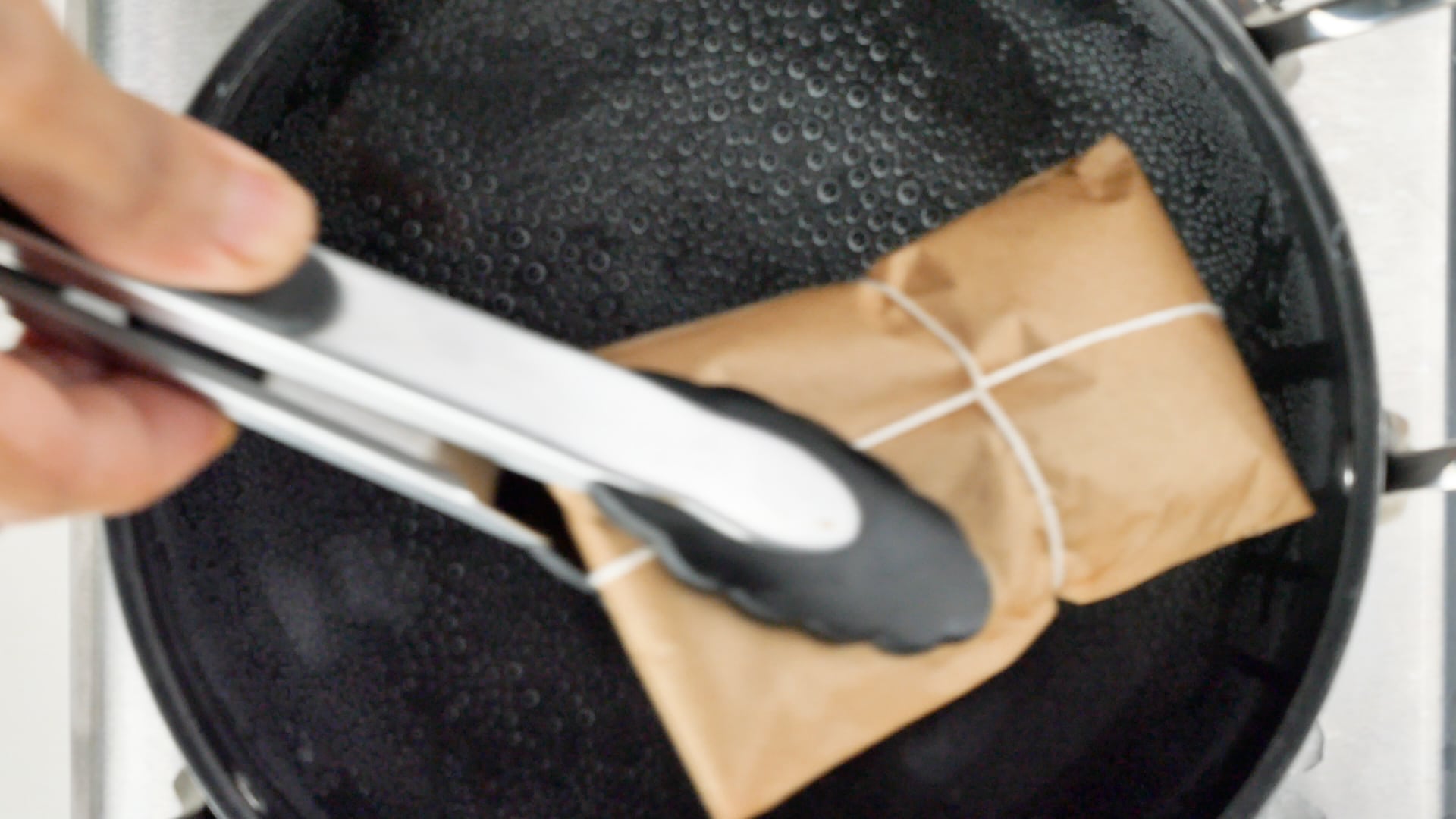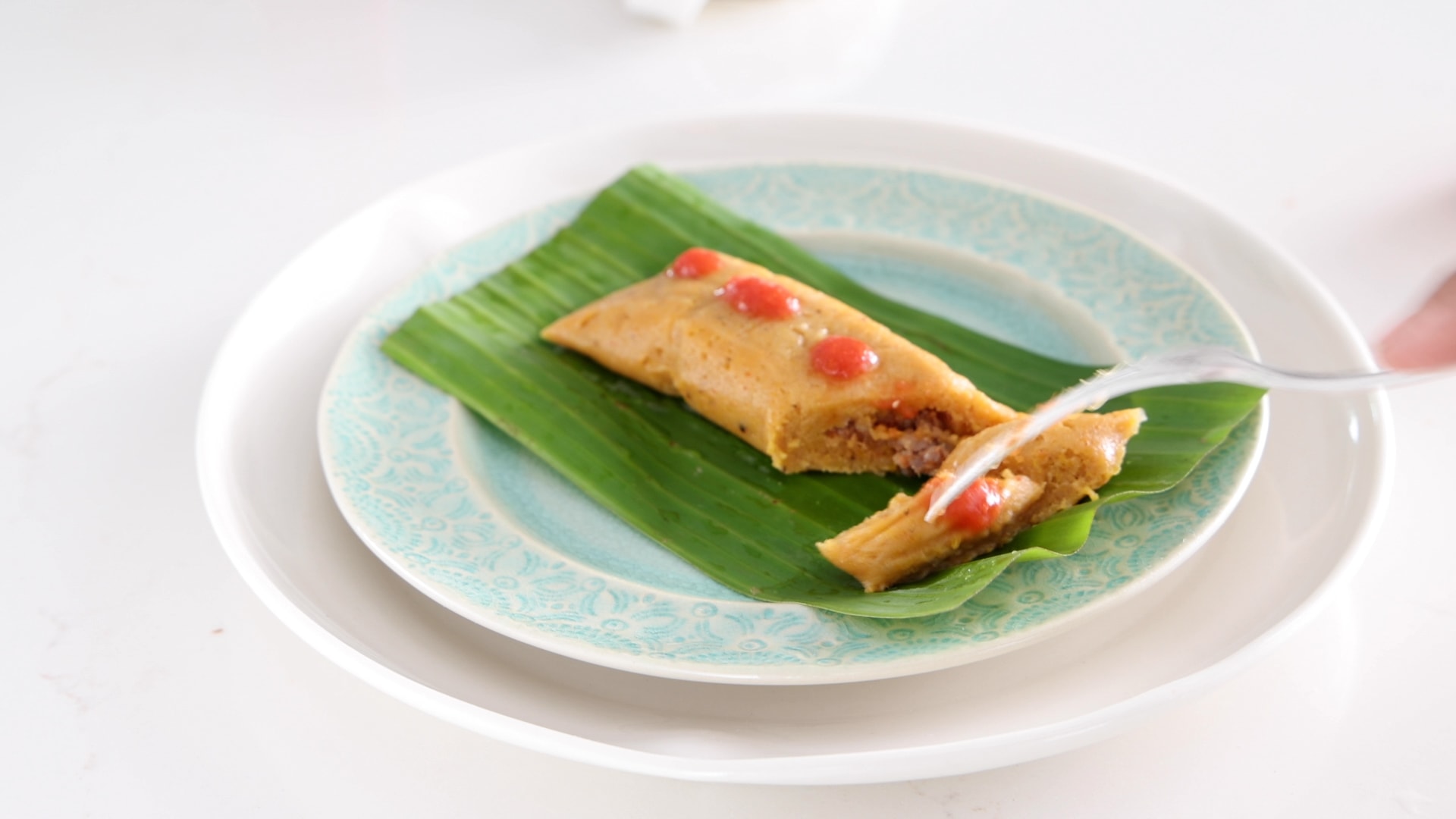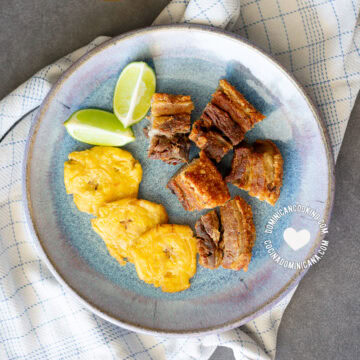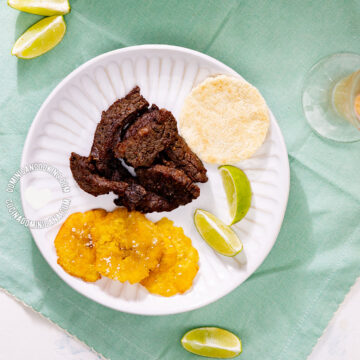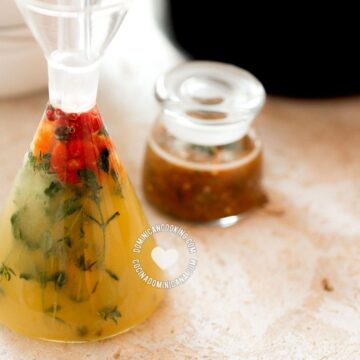Few dishes are as cherished by Dominicans as Pasteles en hoja, a dish that is an essential component of the Christmas and New Year's Eve feast and even makes appearances outside of the holiday festivities. See how easy it's to make creamy pasteles and several rellenos.
By - Last reviewed . Published Dec 20, 2002
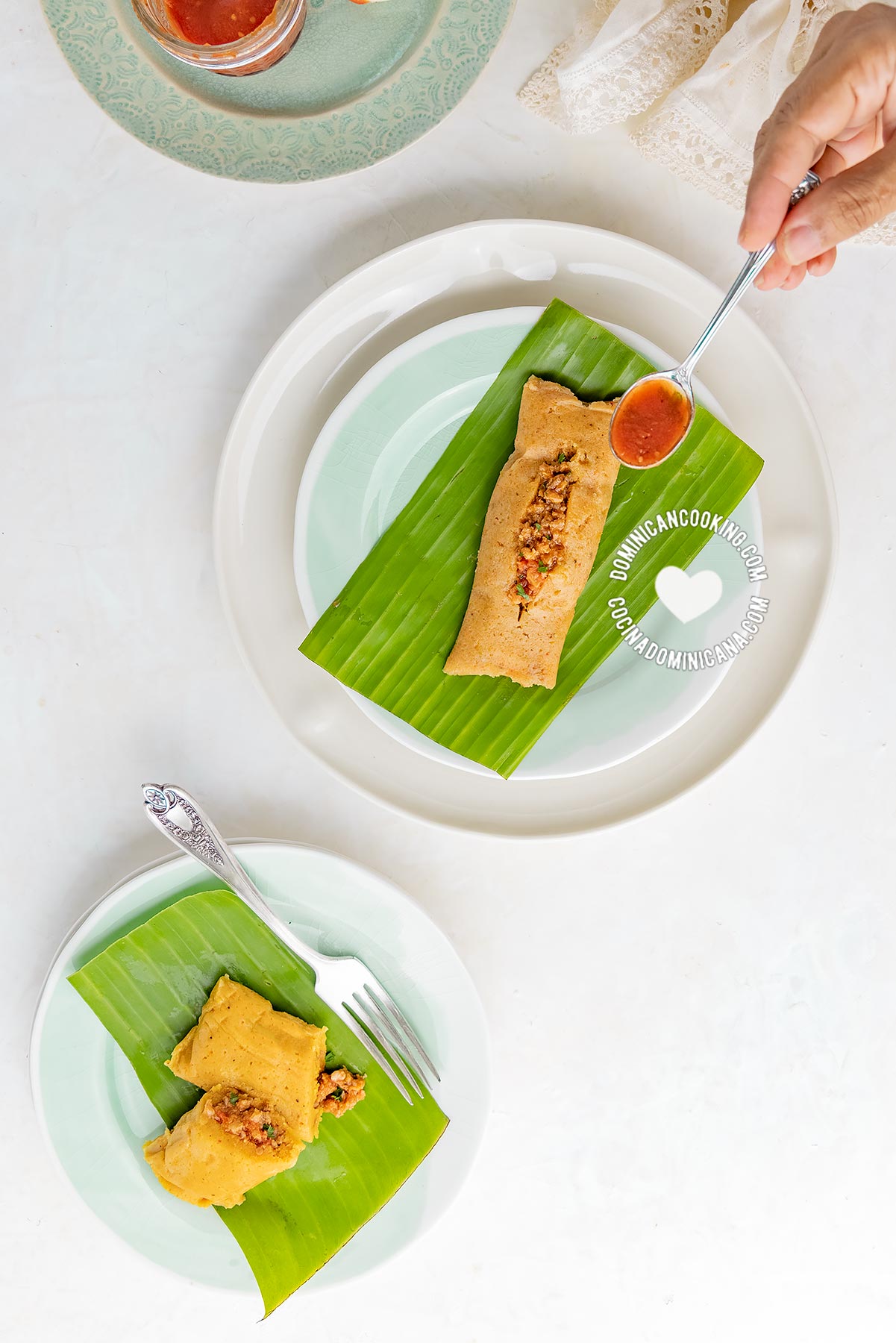
Why we ❤️ it
Whenever I want to explain Pasteles en hoja (roots and beef pockets) to somebody who has never seen them, I usually say, "they are a little bit like tamales, with different ingredients".
I know it's a roundabout way of explaining it, but it gets the message across. Maybe. The important thing to know is that these creamy, flavorful, rich, meat-filled pockets are an essential part of many of our celebrations.
What are pasteles en hoja?
Pasteles en hoja are like tamales, popular in the Dominican Republic and Puerto Rico. Instead of a corn "masa", a plantain (or unripe banana) and root vegetables (viveres) batter is used as the base. They can be stuffed with beef (the most common stuffing), chicken, or whatever strikes your fancy. They are wrapped in a green banana or plantain leaf, then boiled.
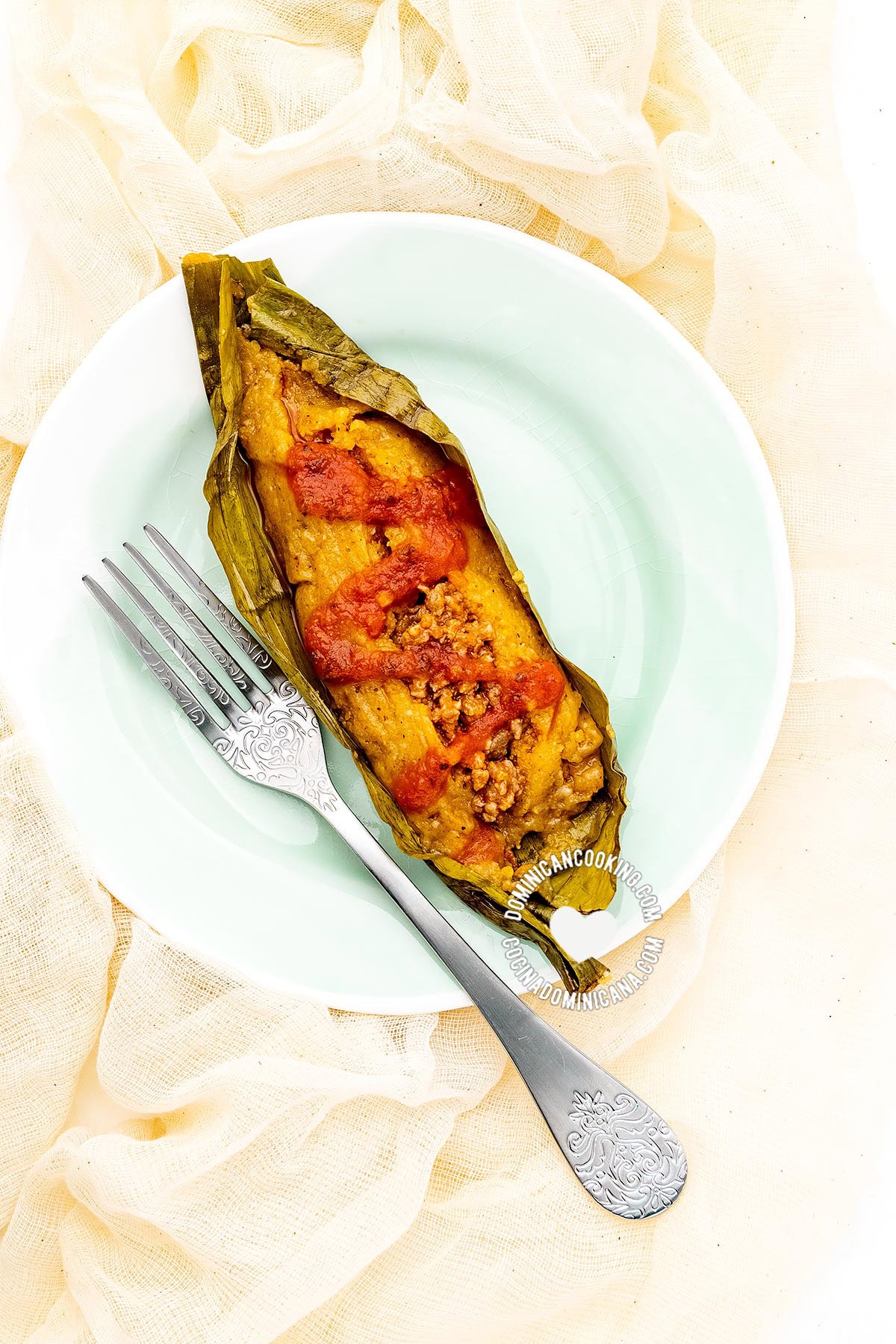
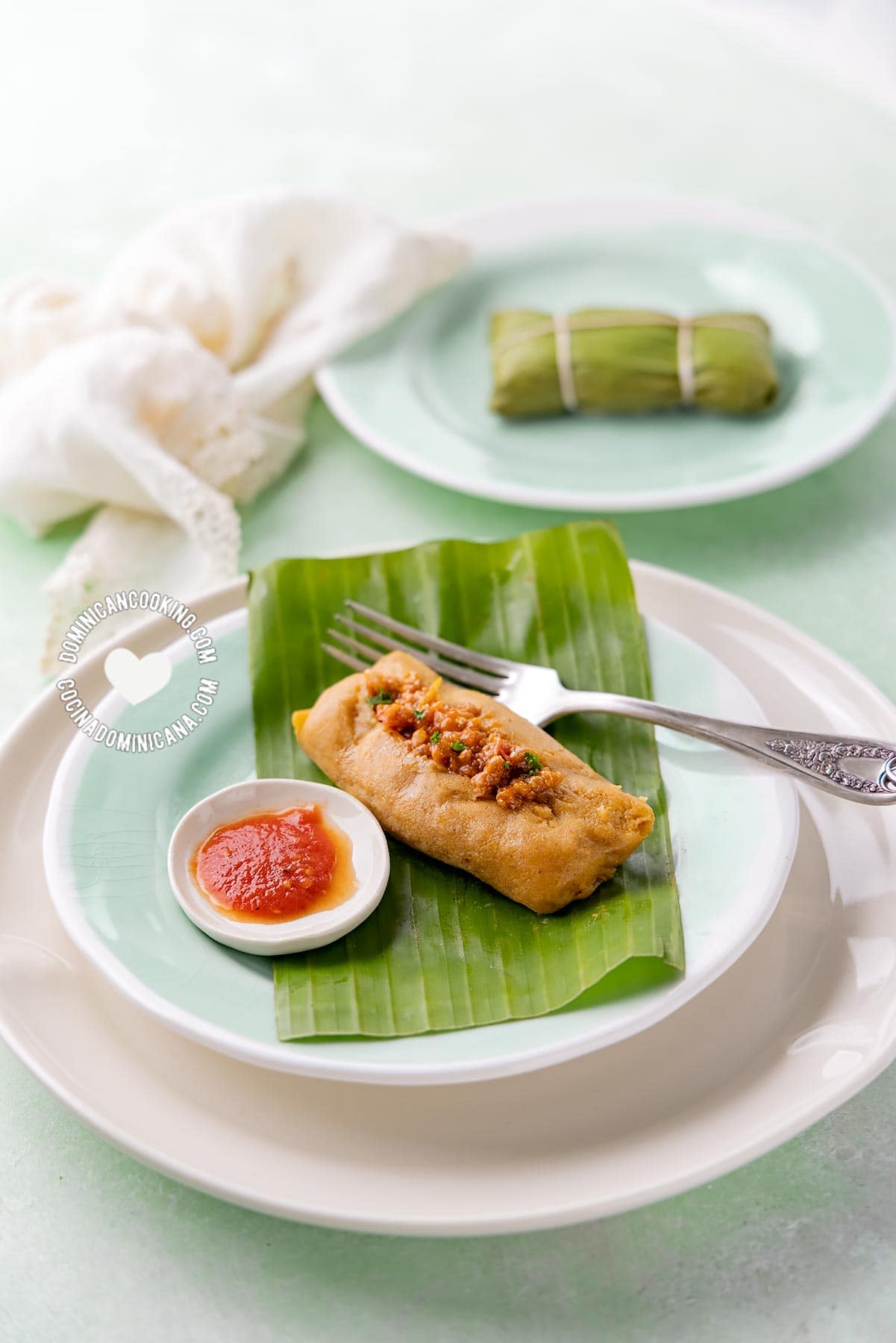
Dominican plantain pockets (pasteles en hoja).
Dominican vs. Puerto Rican pasteles
The name pasteles de masa seems to be the most common way to find Puerto Rican pasteles recipes in Spanish. They are very similar to Dominican pasteles en hoja. Having once tried Puerto Rican pasteles, I can honestly say that I could have closed my eyes and imagined I was in Santo Domingo; they were that close.
Curiously, when I checked the oldest Dominican cookbook I have (published in the 1930s), there were two versions of this dish, one the author called "Pasteles Puertoriqueños". The other was very similar to this recipe of pasteles en hoja dominicanos, but with the addition of yuca (we don't currently do so), so by then, Dominicans were aware of the two versions of this dish, I believe.
Filling for pasteles
- Ground beef pasteles filling: Or pasteles de carne de res, or carne molida, the most common one.
- Chicken pasteles filling: Pasteles de pollo is a very popular choice too.
- More fillings: Try these other fillings if you want to make vegan pasteles, or try something different.
More pasteles en hoja recipes
- Pasteles de yuca en hoja
- Pastelón en hoja (easy pasteles casserole): You'll be blown away, it has the same flavor and texture of pasteles but much less work to make it.
Top tips
- This Christmas classic is made with many ingredients that, although common in the Dominican Republic, might be hard to come across in your own country, so plan this recipe ahead to give yourself time to hunt down all the necessary ingredients - it will be worth it. If you can't get the banana tree leaves, don't despair; you can use parchment paper instead.
- Why do I ask you to weigh the plantain? Not all plantains are created equal. Exhibit no.1:
- Plantain is the most important ingredient in this recipe, and how much of it is added will determine the consistency of the final product. Since I don't know what size plantains you'll find, the safest way is to determine their weight once peeled. This is probably only necessary the first (or first few) times you make this dish, and eventually, you'll be able just to eyeball it.
- Cut the plantain or banana leaf into 5"x5" [13 x 13 cm] squares.
- For wrapping, I prefer to use both plantain leaves and rectangles of parchment paper, it is more waterproof that way, and the plantain leaves retain a nicer color. If you cannot find plantain leaves, then use parchment paper only. Just make sure to tighten the twine.
- Ketchup? No ketchup? Hot sauce? No hot sauce? Nobody agrees on any of these questions. Ketchup is the most common dressing for this dish, followed by both. But you choose what you like best, and how much.
About our recipe
In all the years I've been writing about our cuisine, I've encountered countless ways of making pasteles (before I started writing about Dominican food, I just cared about eating them, not how they were made).
Some people use unripe bananas instead of plantains, some reject using auyama as blasphemous, and anything in between. There is no one right way to make pasteles, and that's a great thing. We all like different things.
The main objective in my writing this recipe is that I want pasteles that are creamy and soft. Many pasteles turn out so hard it's like eating a boiled green plantain. Not this one. Don't be afraid when the batter seems a bit too runny; this is important. It's what will result in the kind of soft, juicy pasteles most people prefer.
We'd love to hear the tips you swear by for great pasteles, so let us know in the comments!

Video
Recipe
This awesome free recipe contains Amazon affiliate links, we receive a small commission from any purchase you make at no extra cost to you. Thanks for your support!
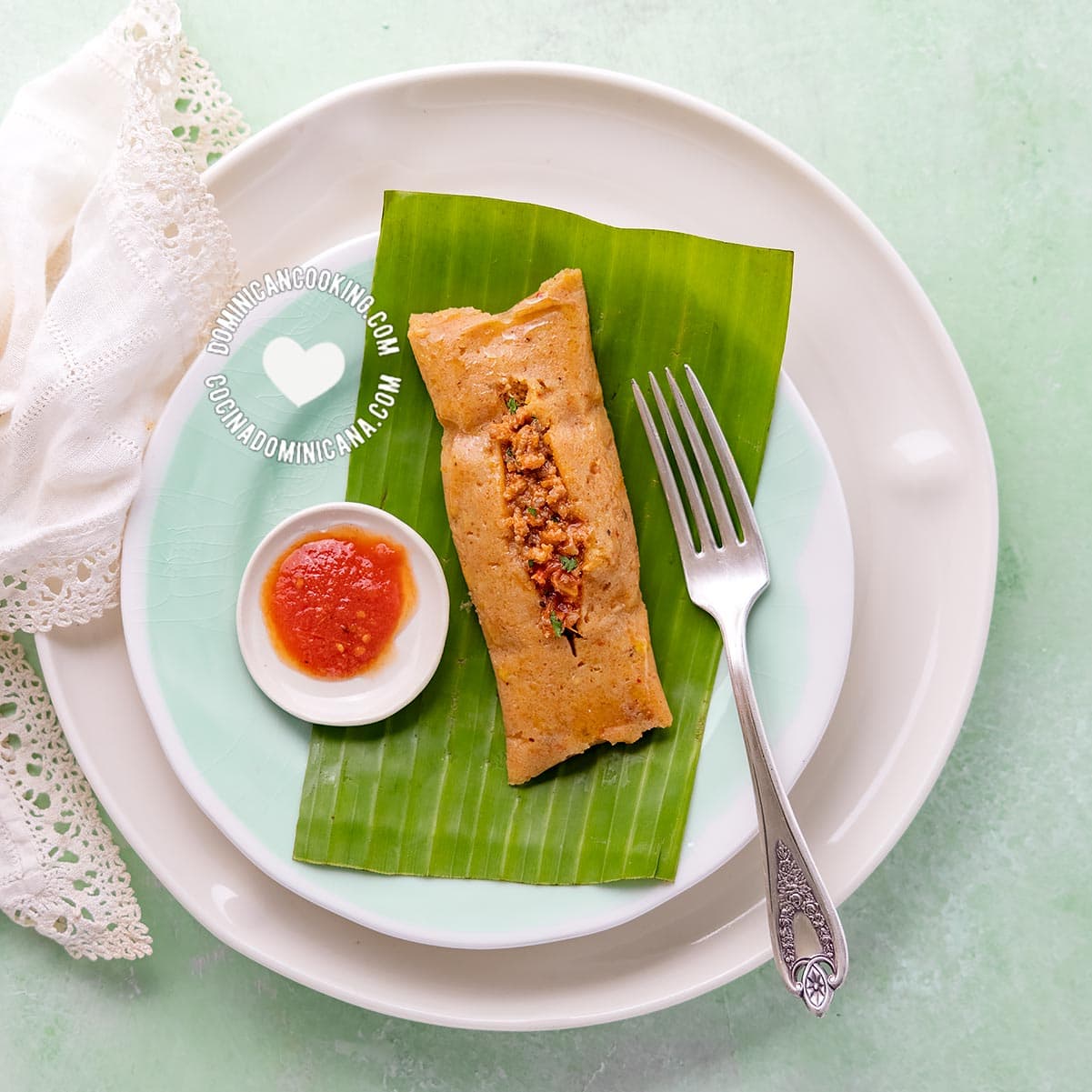
Pasteles en Hoja [Recipe + Video] Dominican Plantain Pockets
Ingredients
Filling
- Filling, (see list above recipe)
For the batter
- 1 plantain (green, unripe), or 1½ medium plantain (½ lb [227 g] once peeled, see notes)
- ⅓ pound yautía (malanga), [151 g] peeled
- ⅓ pound auyama (kabocha squash), [151 g] peeled
- 1 tablespoon seasoning powder, (must contain garlic and onion)
- 1 cup milk (whole or skim), [237 ml]
- 1½ teaspoon salt
- 2 tablespoon salted butter, [28 g]
- 1 tablespoon bija (annato, achiote) powder
For wrapping
- 12 Banana tree leaves squares, (see notes)
- 12 Leafs parchment paper, (Amazon affiliate link - see notes)
- Twine, (the kind of string used for food)
For boiling
Instructions
1. Making the batter
- By hand: Grate the plantain, yautía, and auyama with the least coarse side of the grater. Once grated, combine all the ingredients for the batter and mix well.Or with blender/food processor: Chop the plantain, yautía, and auyama, and combine them with the rest of the ingredients for the batter.Pureé in a strong blender or a food processor until it's uniform, and you can't feel any clumps, but feels like grains of sand in it. It may take 5-10 minutes, depending on the blender/processor.
2. Wrapping pasteles
- Put 2.5 tablespoons of the plantain and root mixture on one of the plantain squares. Put 2 tablespoons of filling in the center, cover with 2 more tablespoons of the root mixture to cover the filling.Fold the leaf square in the shape of an envelope. Wrap again in parchment paper and tie tightly.Repeat with the remaining batter.
3. Boiling pasteles en hoja
- When all are wrapped, bring one gallon of water to boil in a large pot over medium heat. Add a tablespoon of salt.When the water reaches a rolling boil, carefully lower the pasteles into the water. Cover and cook for 40 minutes. The pasteles will float when put into the water, but as they cook, they'll start to puff and sink. Make sure to turn them a couple of times during the cooking time, so they cook uniformly on all sides.Once the 40 minutes have passed, remove one from the liquid, unwrap, and check for doneness: the consistency of the batter will have changed throughout.
4. Serving
- If it's ready, remove all from the water, otherwise boil for another 10 minutes.Serve right after unwrapping, garnished with hot sauce and/or ketchup.
Cook's Notes
Nutrition
Nutritional information is calculated automatically based on ingredients listed. Please consult your doctor if you need precise nutrition information.
Want to save this recipe?
Enter your email & I'll send it to your inbox. ❤️ Plus, get great weekly recipes from me!
FAQs
You absolutely can freeze masa for pasteles, however, the best way to freeze pasteles and preserve their flavor and texture is to freeze them after it has been stuffed and wrapped.
There are two ways to reheat pasteles: If they are boiled and just cold from the fridge, you can reheat them wrapped in the microwave for 2 minutes. If they are frozen raw, you can boil them in salted water for an hour.
It takes about an hour to boil pasteles that are frozen, counting from the time the water breaks the boil.


